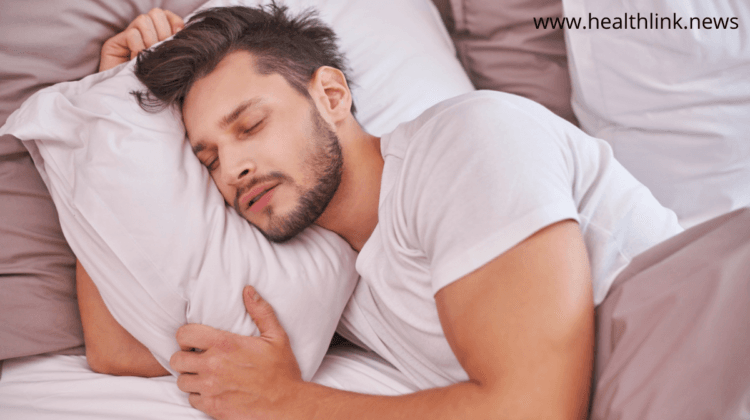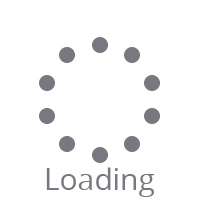What Are The Signs That You Need A Sleep Study?

Sleep disorders often result from underlying conditions, so you may need to be tested for these conditions before a diagnosis of sleep apnea is made. Polysomnography is used to diagnose sleep apnea, breathing problems, and other breathing disorders. The polysomnogram is a comprehensive test used to diagnose sleep disorders. It documents brain waves, the oxygen level in your blood, heart rate and breathing, as well as eye and leg movements during the study. Through a series of different tests and observations, the doctor will determine whether your condition requires treatment. Polysomnography may be done at a sleep disorders unit within a hospital or at a sleep center. While it is typically performed at night, polysomnography is occasionally done during the day to accommodate shift workers who habitually sleep during the day.
If you want to be diagnosed with a sleep disorder, polysomnography may be used to help initiate or adjust your treatment plan. In addition, home sleep apnea testing uses a limited number of sensors to focus primarily on diagnosing obstructive sleep apnea (OSA).
Reasons For The Diagnose
Polysomnography is a method for evaluating sleep disorders. A polysomnogram (also called a sleep study) records the electroencephalograph, eye movement, and breathing patterns in people with sleep disorders. It can also be used to monitor treatment for insomnia or other health issues such as pain, fibromyalgia, narcolepsy, or epilepsy. There are different types of home sleep apnea test devices using different combinations of sensors. The Polysomnogram (PSG) test is a device that records your sleep patterns and provides information about your breathing and heart rate. It can also track other areas of your body, such as blood flow through the brain and body movements during sleep. Apart from this, other styles also incorporate information on blood vessel tone. Non-rapid eye movement (NREM) is the normal process of falling asleep that begins with sleep. During this stage, your brain waves, as recorded by electroencephalography (EEG), slow down considerably.
As you go through different stages of sleep, your brain works to make memories. During NREM sleep, the large areas of your brain that control motor functions slow down and become less active. Your eyes do not move back and forth rapidly during NREM, in comparison with the later stages of sleep. After an hour or two of NREM sleep, your brain activity starts up again with the beginning of rapid eye movement (REM) sleep. Most dreaming occurs during REM sleep. One can normally go through multiple sleep cycles a night, cycling between NREM and REM sleep in about 90 minutes.
With some observations your doctor may recommend a sleep study if the following conditions are noticed:
- Sleep apnea or another sleep-related breathing disorder: Sleep apnea is a breathing disorder that makes it hard to get enough sleep. Your breathing repeatedly stops and starts during sleep. This causes you to wake up many times during the night, which can cause daytime sleepiness—the opposite of normal sleepiness.
- Periodic limb movement disorder: Periodic limb movement disorder (PLMD) is a neurological disorder that causes you to involuntarily flex and extend your legs while sleeping. It is sometimes associated with restless legs syndrome.
- Narcolepsy: Narcolepsy is a sleep disorder that impairs your ability to stay awake during the day. You experience overwhelming daytime drowsiness and sudden attacks of sleep in this condition. Narcolepsy is believed to have multiple causes, including a defect in receptors in the brain that lead to excessive wakefulness.
- REM sleep behavior disorder: REM sleep behavior disorder can make it hard to fall asleep, disrupting your normal sleep pattern. The most common behaviors associated with this disorder include talking, moving around, and acting out your dreams.
- Unusual behaviors during sleep: A sleep study is a commonly used test to help evaluate sleep disorders. During this procedure, you may be asked to perform a variety of movements while “awake” and when sleeping. Sleep studies are often used in the diagnosis of sleep disorders. Unusual behaviors during sleep, such as walking, moving around a lot, or rhythmic movements, may indicate a problem with sleep.
- Unexplained chronic insomnia: If you consistently have trouble falling asleep or staying asleep, your doctor may recommend polysomnography (PSG). Polysomnography involves taking many measurements from your brain’s electrical activity to monitor sleepiness. This procedure is often only done if you have chronic insomnia or a sleep disorder such as obstructive sleep apnea.
Risks Involved With Sleep Study
Polysomnography is a non-invasive, painless test that measures the brain’s electrical activity during sleep. During sleep, the brain almost stops thinking and turns off. Most patients do not report any side effects. The most common side effect is a skin irritation caused by the adhesive used to attach test sensors to your skin. Other side effects include minor changes in sleep patterns and some patients will occasionally experience soreness and swelling around their eyes or ears, which can be treated with over-the-counter pain medications.
How To Prepare For Test
If you are told to avoid alcohol and caffeine before polysomnography, make a plan to avoid them during the afternoon and evening. You should avoid alcohol or caffeine for a few hours before your polysomnography appointment to reduce the risk of sleep disorders such as insomnia and other symptoms related to the sleep disorder. Alcohol may affect your sleep patterns, and caffeine can make symptoms of some sleep disorders worse.
Do not nap in the afternoon before a sleep study, unless your doctor says it is OKAY. Napping in the afternoon before your sleep study may be beneficial to some, but it is discouraged. Beware of lotions, gels, and makeup products that you have applied before your test, however, you can take a bath before the test. These products can interfere with the use of electrodes and make it difficult to conduct a successful sleep study.
Home sleep apnea testing is conducted in your home. Home sleep apnea testing is a simple, painless, and accurate way to diagnose sleep apnea. This home sleep apnea test is safe, easy to use, and highly effective. There are no needles or strong puffs of air with this test. All you need is your doctor’s office, a recliner chair, and some patience. The equipment is delivered to your home or a doctor’s office, where you will be given instructions describing how to use it. Ask questions if you are unsure about how the test or equipment works.
Expectations During Sleep Study
You may need a polysomnography test if you have a sleep disorder, such as sleep apnea or narcolepsy. The team of specialists at our sleep center will carefully evaluate your health, including any issues that may be contributing to your symptoms. Polysomnography (PSG) is a special type of sleep study that uses a combination of brain activity monitors and recording devices to examine your brain waves and eye movements while you are asleep. You will be exposed to bright light while in this room, but it is safe and comfortable. You may bring items you use for your bedtime routine, and you can sleep in your own nightclothes. If you are having a home sleep apnea test, you should follow your regular bedtime schedule.
You will sleep in an individual sleep lab, with a mattress on a platform-style bed, which allows you to roll over and get up without disturbing your partner. The electrodes will be placed on your head, chest, and legs. A mild adhesive, such as glue or tape is used to attach the electrodes. The polysomnography technologist may also want to speak with you directly over the phone during the night if they feel there is something wrong with how you are sleeping.
Polysomnography technologists monitor you throughout the night. If you need assistance, you can talk to them through the monitoring equipment. During the study, the technologist may have you try a positive airway pressure (PAP) machine for sleep apnea. This is a device that consists of a tight-sealing nosepiece through which a gentle stream of air is delivered to enhance your breathing. Continuous positive airway pressure (CPAP) is one type of PAP machine.
Expectations After Sleep Study
After a home sleep apnea test, you can leave the testing center and resume your normal activities. In the morning following a home sleep apnea test, you may remove the sensors when you wake. You will return the testing equipment to your doctor’s office or by mail; some home sleep apnea tests are disposable now so they can be discarded after they are done.
Test Done For Sleep Study
A polysomnogram (PSG) is a multiple-component test that can accurately diagnose sleep apnea, a sleep disorder. When you undergo a PSG, you will be asked to record several things during the night: your weight, when you wake up and snoring. The recordings are analyzed by a qualified sleep specialist who uses the data to find out if you have sleep apnea or another type of sleep disorder.
Apart from this, there are other tests also such as:
- EEG (electroencephalogram): measures and records brain wave activity
- EMG (electromyogram): records muscle activity.
- EOG (electrooculogram): it records eye movements.
- EKG (electrocardiogram): used to record heart rate and rhythm
- Nasal airflow sensor to record airflow
- Snore microphone to record snoring activity
